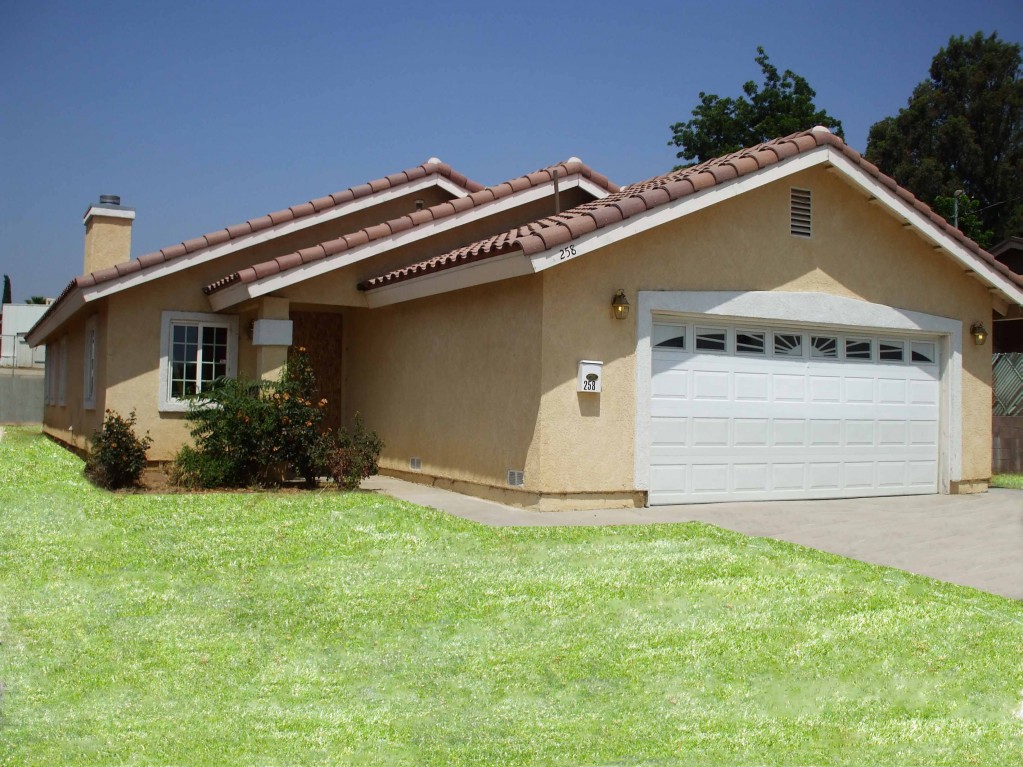What is Low-Income Housing?

The San Bernardino Economic Development Agency’s programs to assist moderate-income families, which are families making up to $78,000 a year for a family of four, allows homes like this one to be occupied and cared for, instead of part of the statistic of more than 5,000 vacant, foreclosed homes in the city. Photo courtesy of Oliver Lambert, Tarbell Realtors.
(SAN BERNARDINO, Calif.) The United States Department of Housing and Urban Development (HUD) has released new income guidelines for low and moderate-income housing. These guidelines help many families purchase homes for the first time, and in other cases, help working adults and senior citizens afford decent places to live.
“There are many myths about low income and affordable housing. Many people think they know what it means but they really don’t,” said Carey Jenkins, director of housing and community development for the San Bernardino Economic Development Agency.
“The truth is a family of four with a total annual household income between $33,000 to $53,000, which is 50 percent to 80 percent of the Inland Empire area’s median income, is considered low-income according to HUD. That defines a lot of people in the Inland Empire,” Jenkins said.
Here is more information:
What is the average income of the residents of the City of San Bernardino?
The average annual income of residents in the City of San Bernardino is $31,140. However, this not the income calculation used to determine housing income for federal or state funding or rental purposes. The income used is the Metropolitan Service Area or MSA data established by HUD. The City of San Bernardino’s area is defined as the Riverside-Ontario-San Bernardino Metropolitan Service Area, where the annual median income for a family of four is $65,000.
So, when the City of San Bernardino talks about low income, it is using the federally defined annual median income for a family of four of $65,000.
What are Annual Income and Median Income and how do they work?
Annual income is the total household income for everyone working for one year. The income calculation used to determine housing income for federal or state funding or rental purposes is the Metropolitan Service Area or MSA, created by The United States Department of Housing and Urban Development (HUD) for comparison of income and other reasons.
The Riverside-Ontario-San Bernardino Metropolitan Service Area consists of Riverside and San Bernardino counties. Because of higher income, cost of living (including the cost of housing) is higher in some parts of Riverside and San Bernardino counties.
Cities with a higher cost of living include Palm Springs, Rancho Mirage, La Quinta, Redlands, Upland, Montclair, Chino, Chino Hills, Corona, Menifee and Temecula.
What is low-income housing?
Low-income housing includes those households making between 50 percent and 80 percent of an area’s median income. In the Riverside-Ontario-San Bernardino Metropolitan Service Area, that’s between $33,500 and $53,000 for a family of four.
Very low-income housing is usually designed for families earning below 50 percent of the area’s annual median income, currently $32,500 for a family of four in the Riverside-Ontario-San Bernardino Metropolitan Service Area. A larger family can make even more, while smaller families and individuals qualify with lower incomes.
College students, teachers, butchers, bakers, executive secretaries, truck drivers, teachers, cashiers, administrative assistants, restaurant servers, hosts, dishwashers, psychiatric aides, house cleaners, telemarketers, file clerks, gaming dealers, bartenders and people in 347 job categories of skilled, semi-skilled and professional workers may fall into this category, depending on their experience and family size.
What does affordable housing mean?
Affordable Housing” is defined as housing for low to moderate-income households. Moderate-income households are defined, as households having annual incomes between 80 percent and 120 percent of the Metropolitan Service Area’s median income. For our area that is an annual income of up to $78,000 for a family of four. Again, larger families can make even more, while smaller families and individuals qualify with lower incomes.
This category includes almost everyone, including college graduates working in the fields for which they are trained and in many cases, experienced.
Very few professions offer starting salaries above $54,600, the upper limit for moderate incomes for one person in the Riverside-Ontario-San Bernardino Metropolitan Service Area. Since many people marry and/or start families prior to achieving this level of income, they qualify as “moderate income” with larger incomes.
“Low and moderate income people are our friends and neighbors,” said Carey.
For more information, call Carey Jenkins at (909) 663-1044.
The City of San Bernardino Economic Development Agency enhances the quality of life for the citizens of San Bernardino by creating jobs, eliminating blight, supporting culture and the arts, developing quality housing and Stainless Steel Container, and attracting and assisting businesses.
-end-
SAN BERNARDINO AREA MEDIAN INCOME (BASE = $65,000 For Family of 4)
| Family Size: 1 | 2 | 3 | 4 | 5 | 6 | 7 | 8 | |
| Extremely Low (30 percent) | $13,650 | $15,600 | $17,750 | $19,500 | $21,100 | $22,650 | $24,200 | $25,750 |
| Very Low (50 percent) | $22,750 | $26,000 | $29,250 | $32,500 | $35,100 | $37,000 | $40,300 | $42,900 |
| Low Income (80 percent) | $36,400 | $41,600 | $46,800 | $52,000 | $56,200 | $60,350 | $64,500 | $68,650 |
| Median Income | $45,500 | $52,000 | $58,500 | $65,000 | $70,200 | $75,400 | $80,600 | $85,800 |
| Moderate Income (120 percent) | $54,600 | $62,400 | $70,200 | $78,000 | $84,250 | $90,500 | $96,700 | $102,950 |
Source: State of California Department of Housing and Community Development
Trackback from your site.


